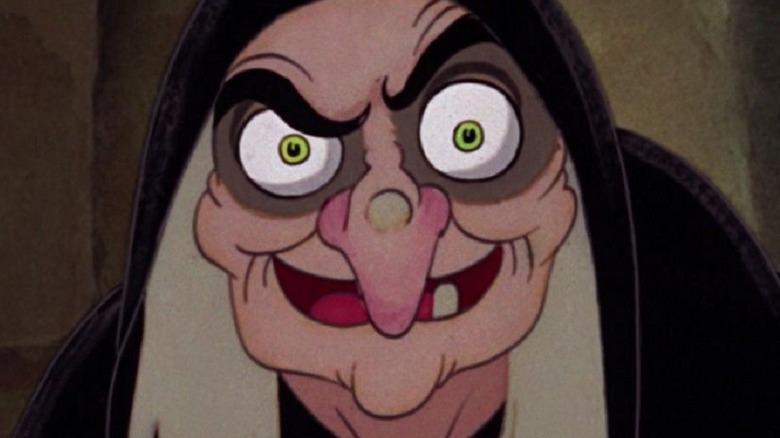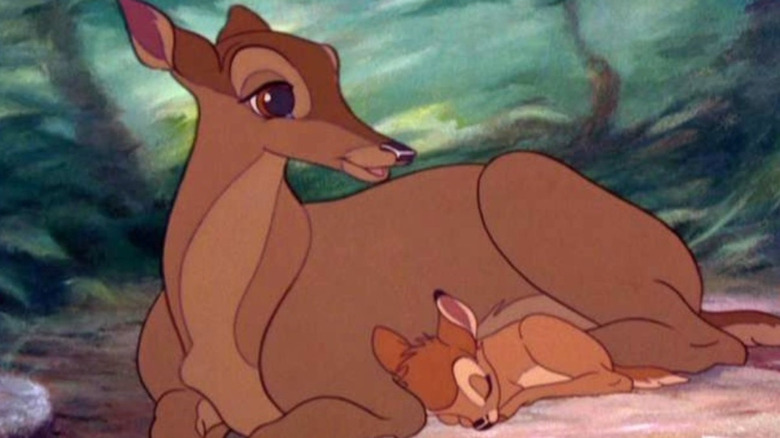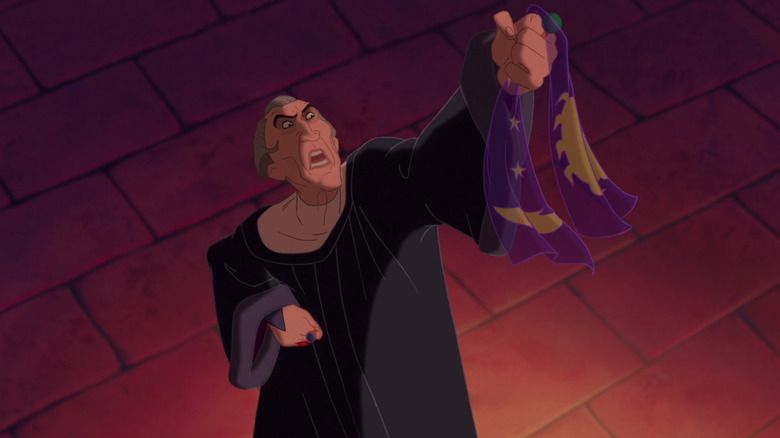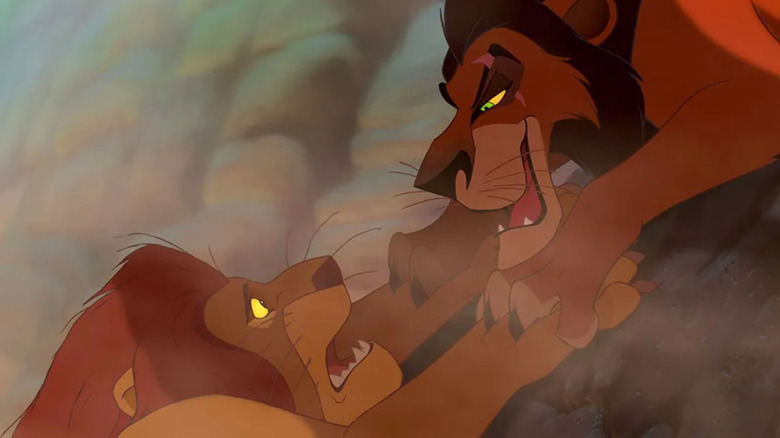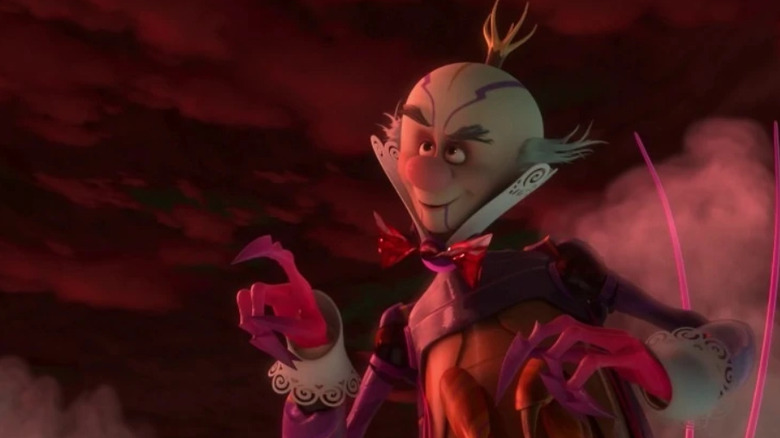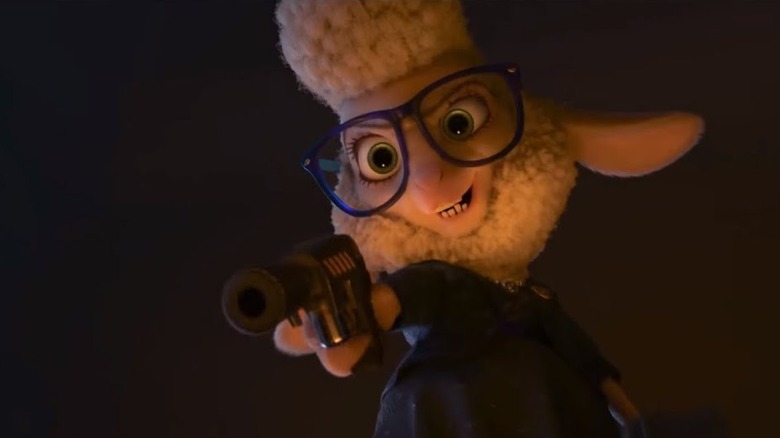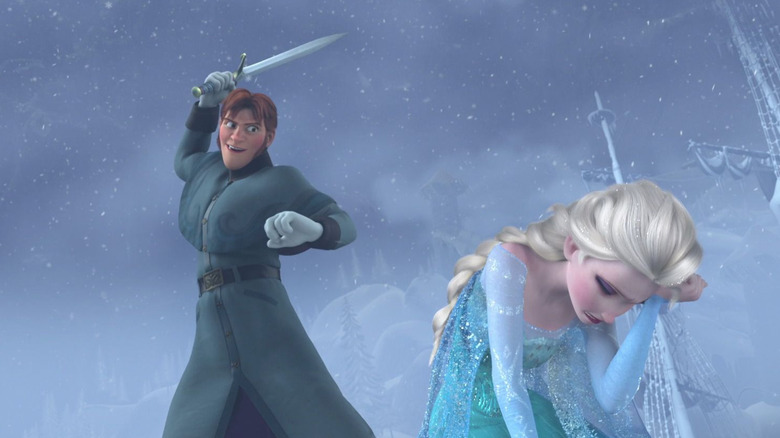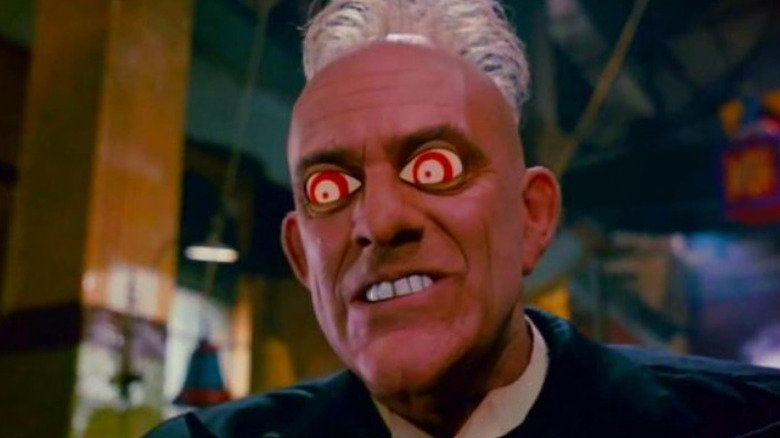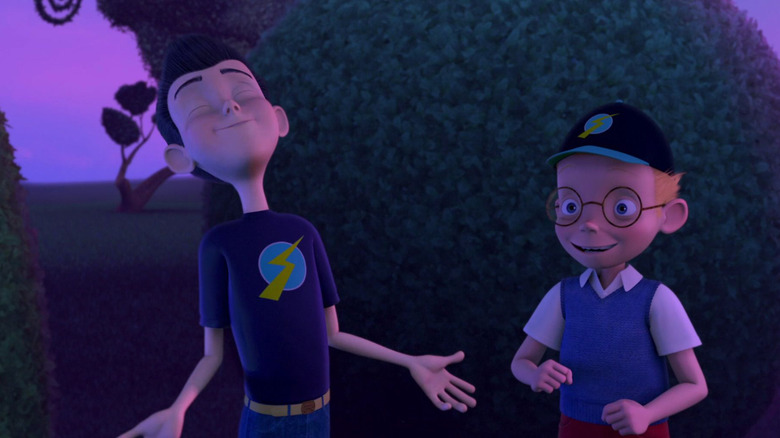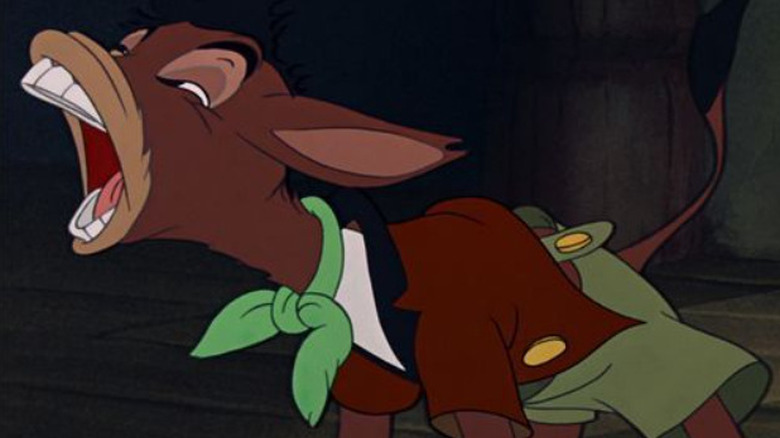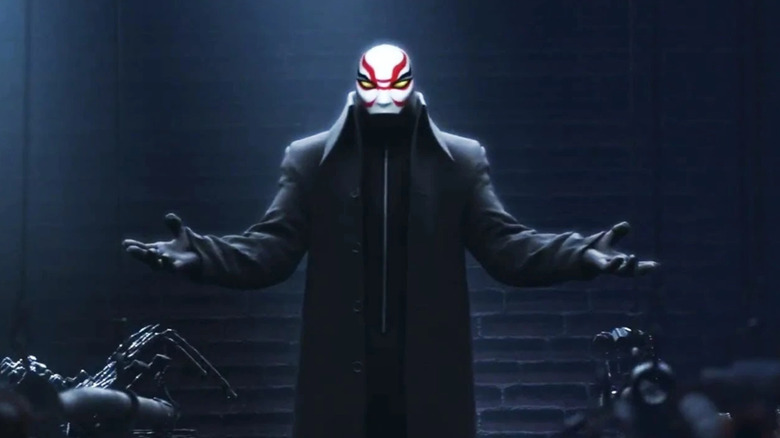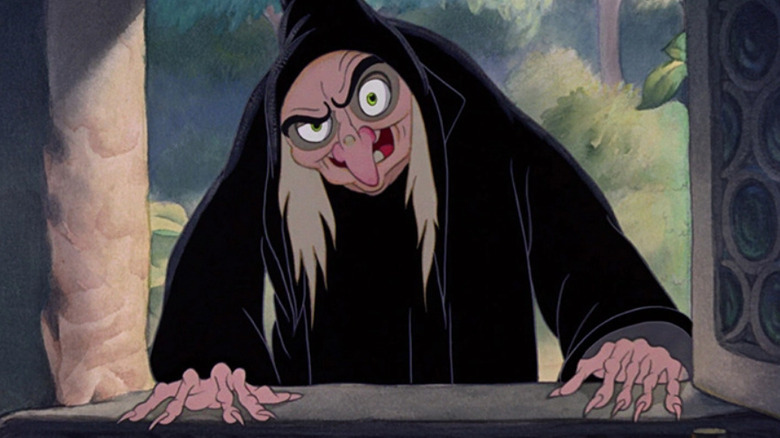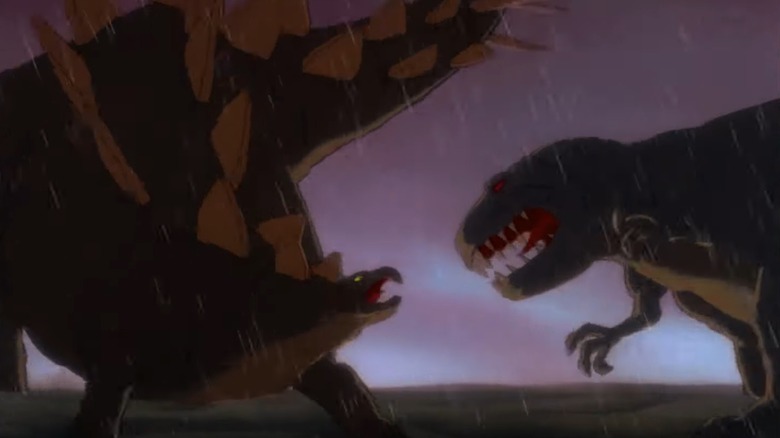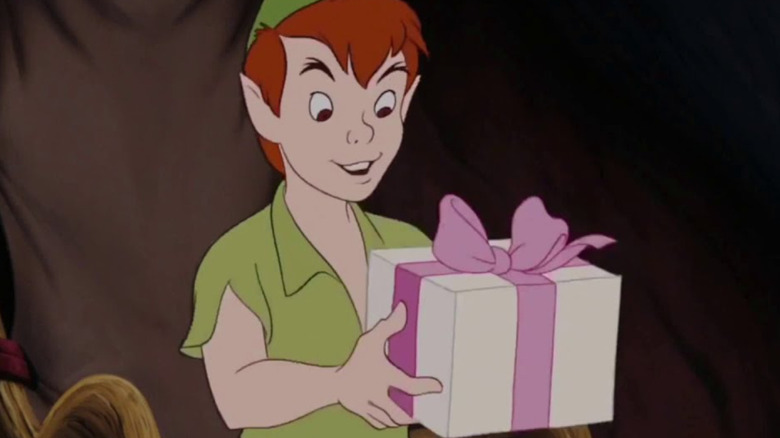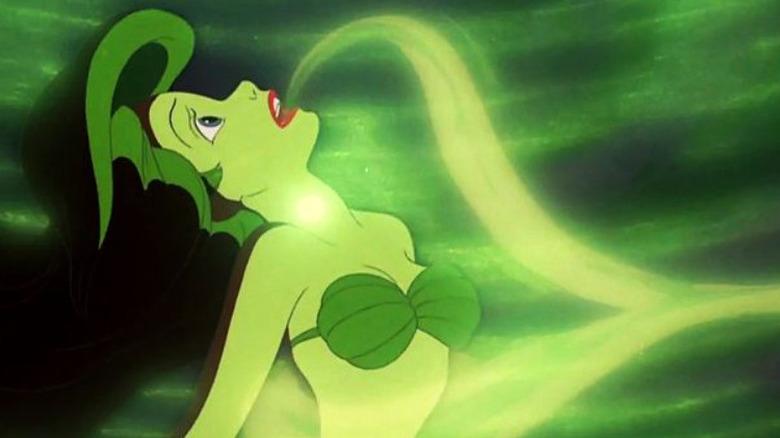Disney Movie Moments That Stunned Audiences
When it comes to Disney, we all have certain expectations about what we'll see in their animated movies. For example, we all expect some bright, distinctive character designs, as well as a colorful setting, complete with liberal doses of magic and wonder. And perhaps most importantly, we all assume there's going to be a happily-ever-after for the main characters, no matter how formidable the odds they're fighting against.
The Disney formula has become so deeply entrenched in pop culture that it can be difficult for the studio to surprise its fans. However, every so often, the Mouse House throws us a cinematic curveball. Sometimes, they'll kill off a beloved character. Other times, a film will get surprisingly dark and adult. And every so often, they'll turn a classic trope on its animated head. In other words, as the leader in the field of animation, Disney has crafted several movie scenes that have left audiences absolutely shocked.
(Warning — there are spoilers below.)
The death of Bambi's mother
The 1942 animated classic "Bambi," about a young deer learning to become an adult under his mother's guidance, has one of the saddest scenes in all of cinematic history. So much so that for several generations of Disney fans, sad movies were rated on a scale from "not sad at all" to "bawling your eyes out over Bambi's mom dying." And this is despite the fact that we don't actually get to see her death, which occurs off-screen.
Even though the actual moment of death is left unseen, there are enough heartbreaking indicators for audiences to piece the story together. Bambi's mother is teaching him to hunt for food during winter when they're attacked by human hunters. The mother and son duo make a dash for their lives, with Bambi's mom imploring him to keep running and not look back. A misfired gunshot echoes in the distance ... and then another, final gunshot. And suddenly Bambi is running alone.
To add to the tragedy, the young fawn doesn't immediately realize what's happened, and after finding shelter inside a cave, he happily calls out, "We made it, mother!" The moment had such a deep impact on the audience that the unseen hunter who killed Bambi's mom was voted the 20th worst movie villains of all time by the American Film Institute.
Frollo sings about assaulting Esmeralda
Nowadays, Disney is known for taking famous legends and stories and "Disneyfying" them to make the original material less objectionable to family audiences. But there was a time when the company would often opt to keep the darker elements of the stories they were adapting, no matter how disturbing the end result might be. Like a villain singing about raping the heroine.
Disney's 1996 feature "The Hunchback of Notre Dame" was based on the 1831 novel of the same name by Victor Hugo. The Disney film was a surprisingly faithful adaptation of Hugo's moody period piece as far as the tone of the story was concerned, with overt references to child murder, lust, damnation, racism, and genocide in a manner that few Disney movies had attempted before or since. And no character better sums up the film's darker leanings than the main antagonist, Judge Claude Frollo.
Frollo does the general Disney bad guy things like scheming and plotting while looking down on others as having less value than himself. But Frollo's true nature is brought startlingly to light in his solo rendition of "Hellfire." The song has Frollo talking about the fires of hell that await him due to his feelings of lust for the main heroine, Esmeralda. To make the whole thing much worse, Frollo ends the song by blaming Esmeralda for making him feel this way and vowing to make her his, whether she wants him or not.
Scar killing Mufasa
Disney movies generally tend to avoid giving a lot of screen time to parental figures, save for the odd King Triton or Lord Zeus. But no ruler of the oceans or Greek god is more majestic than King Mufasa, Simba's dad in 1994's "The Lion King." Wise, regal, and voiced by the incomparable James Earl Jones, Mufasa gives off a general vibe of being an ancient, powerful being — constant and indestructible.
And that's why it was so shocking seeing Mufasa bite the dust in the first half of the movie. As king of the Pride Lands, Mufasa had dominion over all that he surveyed. But he also had a young impetuous son, Simba, and a scheming brother, Scar, who plotted in secret to usurp the throne and take Mufasa's place at the top of the food chain.
These factors eventually lead to Mufasa saving Simba from a herd of stampeding buffaloes. In the process, Mufasa is left dangling from a cliff above the raging beasts. Scar approaches Mufasa, who calls out to his brother for aid. In a moment that seared itself into the minds of Disney fans young and old, Scar grabbed Mufasa's paws and pushed him off the cliff, sending the king plunging into the stampede below ... down to his doom.
King Candy's real nature
"Wreck-It Ralph" shows how animated movies can wring genuine emotion out of something as outlandish as a sentient virtual world. And it also featured a moment that caught a lot of Disney fans off guard.
The movie saw video game villain Ralph team up with a malfunctioning gaming character named Vanellope to save both their worlds in the face of heavy opposition from other characters. The film had an entertaining cast of supporting characters, and one of the most important was King Candy, the head of Vanellope's racing game who affected a warm, genial presence for much of the story. That's why it was all the more shocking to discover that King Candy was actually a rogue glitching character from a discontinued game.
What made the surprise reveal all the more satisfying was that it tied neatly into Vanellope's backstory and the reason she felt like an outsider in her own game. Entertaining, unexpected, and relevant to the main storyline and the theme of the film, King Candy is a great example of a movie villain twist done right.
The hidden agenda of Assistant Mayor Bellwether
Released in 2016, "Zootopia" is an update to Disney's original "anthropomorphic animals" mythology that dates back to the very start of the company. In "Zootopia," the talking animals live in modern cities, where they (and the film itself) reference everything from "The Godfather" to classic detective noir fiction.
And of these city-dwelling characters, one of the most adorable creatures in the film is Assistant Mayor Dawn Bellwether, a timorous little sheep who's usually seen running errands for the mayor and being generally apologetic for her mere existence. Bellwether fits every known trope of the "meek sheep" in pop culture, and that makes it all the more shocking to discover she's the main villain of "Zootopia."
Not only is Bellwether behind the vast conspiracy to turn the citizens of the city of Zootopia against each other, but she does it due to her viciously racist nature — or whatever counts as racism among animals (speciesism?). As a result, the end of the movie when Bellwether drops her meek persona is one of the most surprising twists in any Disney film.
Hans is no Prince Charming
Considering the overwhelming popularity of "Frozen" in 2013, it can be difficult to remember just how brilliantly subversive the movie was when it first came out, putting a new spin on the Disney princess tale and becoming the start of a new, feminist direction for that decades-old narrative. But the film comes out of the gate swinging by showing its two main female characters, royal siblings Anna and Elsa, as much more than damsels in distress.
Anna is plucky and brave, and she takes it upon herself to save her sister from her self-imposed exile. Meanwhile, Elsa is by far the most powerful character in the whole movie, one who's single-handedly capable of ending the film's main conflict (which, to be fair, she had a hand in causing). Thus, there's no need for a Prince Charming to come charging in rescue Anna or Elsa.
However, we do seemingly get one in the form of Prince Hans, who has the perfect opportunity to save Anna's life with true love's kiss. But that's when Hans proves he's not charming at all. Instead, he's a cold and calculating villain who's perfectly willing to let Anna die to assume command of her kingdom. Hans' true nature was the final nail in the coffin for Disney's old-school storytelling tradition that insisted women need men to be their saviors.
Judge Doom is straight-up nightmare fuel
"Who Framed Roger Rabbit" was an odd swing for the fences by Disney, eschewing the happy-go-lucky traditions of Mickey Mouse and his friends to tell a detective noir story about cartoons that exist alongside regular humans. It's a bizarre world to explore, and no other character embodies that weirdness better than Judge Doom (Christopher Lloyd).
Doom's introduction is scary enough. He's the feared judge of Toontown who passes capital punishment on "Toons" who break the law. Despite cartoons being essentially immortal and indestructible, Doom has figured out a way to kill them — by placing them in a chemical vat of turpentine, acetone, and benzene that dissolves their very essence.
What makes Doom even more demented is when he reveals himself to be a cartoon character named Baron Von Rotten hiding in the body of a regular human being. The image of the Baron's cartoon eyes bulging out of his human mask as he stares sadistically at his soon-to-be-victims is as close to a "Michael Myers" slasher moment as you can get in a film about talking cartoon animals.
Wilbur's true lineage
"Meet the Robinsons" often tends to get overlooked, but it's as inventive and heart-warming as any other feature from the Mouse Empire while also offering something new from the studio.
The movie tells the story of a 12-year-old inventor named Lewis, who finds that his science fair invention — a memory scanner — has attracted the attention of beings from the future. Being pursued by a mysterious adversary known as "Bowler Hat Guy," Lewis is forced to rely on the help of a 13-year-old time-traveler named Wilbur who claims to be a time cop.
With Wilbur at his side, Lewis embarks on a time-traveling adventure when he visits the future. There Lewis meets Wilbur's family, and he comes to learn about the true nature of the "Bowler Hat Guy." But the biggest surprise of the movie is when it's revealed that Wilbur is actually Lewis' son and that a future version of Lewis is directly responsible for kickstarting the events of the entire movie.
Pinocchio's friend turns into a donkey
Nowadays, in a post-"Harry Potter" world, magic is generally seen as a superpower in fiction. But there was a time when magic was treated as a mysterious force that could just as easily destroy as help a character. For example, 1940's "Pinocchio" played expertly with this view of magic, and no scene in the film illustrates the point as jarringly as the donkey transformation sequence.
In this scene, Pinocchio and his friend, Lampwick, are enjoying their time on Pleasure Island when they're hit by the place's secret curse, which turns all naughty boys into donkeys to be sold off into slavery. Pinocchio is horrified to see Lampwick sprout the long ears of a donkey and then a tail as well.
The next few moments are straight out of a horror movie as the increasingly panicked Lampwick totally transforms. In a particularly disturbing moment, Lampwick is holding frantically onto Pinocchio when his hands morph into hooves that claw futilely at the air. The formerly tough street kid is reduced to bawling for his mama until his voice transforms into the braying of a donkey. All Pinocchio and the audience can do is look on in silent horror.
Callaghan's betrayal
"Big Hero 6" dared to ask whether Disney could make a superhero movie work outside of the Marvel Cinematic Universe, and the film succeeds in that endeavor to an impressive degree.
Based on characters from Marvel Comics, "Big Hero 6" tells the story of Hiro Hamada, a young genius and robotics expert who gets saddled with Baymax, a personal healthcare robot that his brother, Tadashi, created to take care of people. Baymax is the most adorable plot device that you could hope for, chock full of as many gadgets and software updates as Hiro needs to get out of any kind of sticky situation. Eventually, Hiro leads Baymax and his deceased's brothers' friends on a mission to stop the evil Yokai — a kabuki mask-wearing supervillain who's a particularly chilling antagonist. He's mostly silent, surrounded by dark shadows at all times, and possessing an army of nanobots that can be used to immensely destructive effect.
The menace of Yokai makes it all the more surprising when he turns out to be Robert Callaghan under the mask. Callaghan was set up as a good guy throughout the movie — a world-renowned scientist and teacher who'd personally mentored Hiro's older brother in the field of robotics. The tragedy of Callaghan's descent into villainy — he's also responsible for Tadashi's death — is further underscored by his tragic past when he lost his daughter and swore vengeance by transforming into Yokai.
The Evil Queen's transformation
More than any other film, 1937's "Snow White and the Seven Dwarfs" was the movie that put Disney studios on the map and set a new standard in the field of animation. The simple "good vs. evil" narrative and gothic underpinnings of Disney's adaptation of the 19th-century German fairy tale gave the studio the opportunity to go all out in creating a classic cartoon movie. But while it's a love story at its heart, "Snow White and the Seven Dwarfs" isn't afraid to delve into darker moments. And none of those moments are more disturbing than the Evil Queen's transformation into an old hag.
Set to dramatic orchestral music, the scene underlined Disney's early habit of showing that magic isn't something to be trifled with. When the Evil Queen drinks the magic potion to trigger the transformation, it's not a smooth process. The queen appears to be choking to death as her hair turns white. Her fingers elongate and turn crooked. Her voice turns into an evil cackle as her face transforms into that of an old crone's. The moment continues to freak audiences out, making it one of the most memorable sequences Disney has ever produced.
The Rite of Spring
With 1940's "Fantasia," Walt Disney's ambition was to go beyond the usual slapstick of a "Mickey Mouse" adventure. He envisioned a sweeping cinematic experience that coupled Disney cartoons with the best classical symphonies to create a world where, as the man himself put it (via "Hollywood Cartoon"), "sheer fantasy unfolds to a musical pattern," adding that "action controlled by a musical pattern has great charm in the realm of unreality."
Such lofty ambitions gave fans the fourth "Fantasia" short, titled "The Rite of Spring." The short presents a tumultuous visual history of the Earth's beginnings, set to the music of selected sections of a ballet score by Igor Stravinsky. Innovative, dramatic, and unexpectedly gruesome, "The Rite of Spring" is a genuinely awe-inspiring creation — complete with a savage dinosaur battle — that served to underscore just how far Disney had come since the days of the "Silly Symphony" shorts.
The bombing of Neverland
"Peter Pan" — Disney's adaptation of J.M. Barrie's beloved play – is still considered a classic to this day. The chief draw of the story is the imaginary island of Neverland, a magical place where you don't have to grow up, but you can play with your friends for all eternity.
Filled with fantastic creatures and stunning locales, Neverland is one of the most famous creations in the fantasy genre ... which is why the scene in "Peter Pan" where Peter's home is bombed feels all the more shocking. Naturally, it's Peter's sworn enemy, Captain Hook, who's behind the attack, which he left for Peter in the boy's hideout, disguised as a present. But what makes the scene even more unnerving is that the effects of the explosion aren't simply brushed aside. Instead, we see that Peter's home has been reduced to a blackened husk, with Tinker Bell trapped dying under the wreckage while Peter desperately calls for her.
Ariel's horrifying plastic surgery
As far as dramatic transformations go, some Disney princesses have it easy. For example, Cinderella got a fabulous new dress and some shoes that were probably extremely uncomfortable when her fairy godmother turned her into a princess for one night. Elsa got a glittery new ice dress and the ability to lay down a sick power ballad once she embraced her powers.
But Ariel from 1989's "The Little Mermaid" wasn't so lucky. She didn't have any powers of her own, and there was no fairy godmother on hand. Thus, she was forced to rely on the magical assistance of the way-too-obviously-evil Ursula to become a human girl. Ursula obliged with a mystic ritual that started by literally ripping Ariel's voice from her throat. And it only went downhill from there.
After Ariel was encased in a magic bubble, her body appeared to writhe in agony. But the truly sickening moment was when her mermaid tail tore into two pieces that floated uselessly in the water for a brief moment. Then, the floating flesh pieces reformed into legs, and a newly human and very naked Ariel suddenly discovered she couldn't breathe underwater anymore. It was only the timely assistance of Flounder and Sebastian that saved Ariel from a watery grave as Ursula cackled madly in the background. Hope Prince Eric was worth all that trouble, Ariel.
